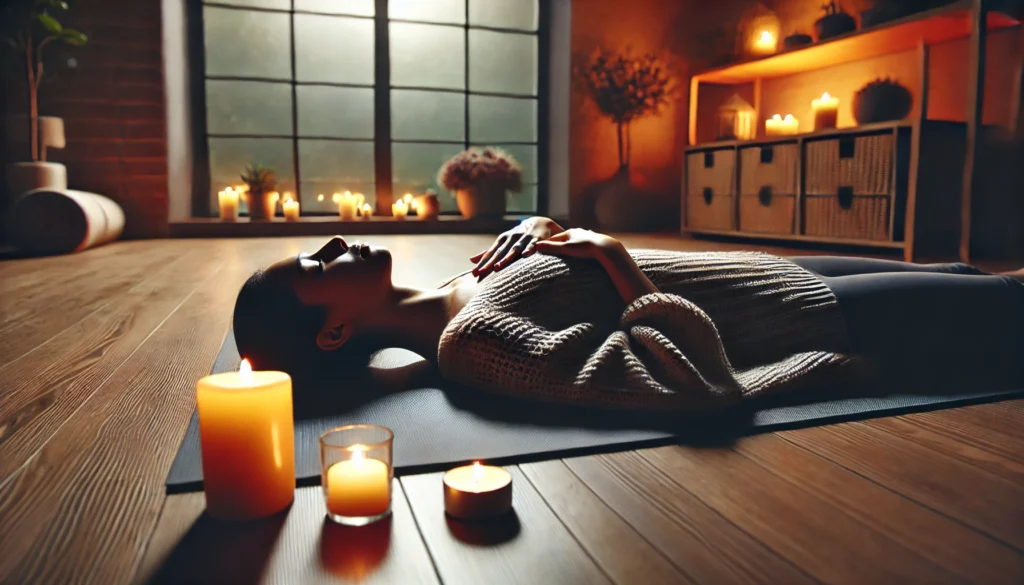In an age marked by chronic stress and heightened anxiety, the simple act of breathing has become a profoundly underestimated tool. Yet, science has repeatedly affirmed what ancient wisdom traditions have practiced for centuries: learning how to slow breathing down can be a powerful way to regulate the nervous system and reduce anxiety. Whether you’re struggling with daily stressors, panic attacks, or long-term anxiety disorders, evidence shows that targeted breathing techniques can help restore equilibrium to both body and mind. This article delves deep into the science, psychology, and practical application of breathwork, revealing how this natural process can be harnessed for true mental and physiological relief.
You may also like: Proven Relaxation Techniques for Stress and Anxiety: Evidence-Based Strategies to Calm Your Mind and Body
Understanding the Physiology of Breathing and Anxiety
To fully appreciate the role of breathing in anxiety relief, one must first understand how breathing interacts with the autonomic nervous system. This system is divided into two primary branches: the sympathetic nervous system, which governs the fight-or-flight response, and the parasympathetic nervous system, responsible for rest, digestion, and recovery. When we are anxious, our breathing becomes rapid and shallow, activating the sympathetic branch. This triggers a cascade of physiological changes including increased heart rate, elevated blood pressure, and heightened alertness.
In contrast, when we slow our breathing down, we stimulate the vagus nerve—a key player in the parasympathetic system. The vagus nerve influences everything from heart rate variability to digestion and emotional regulation. Deep, deliberate breathing sends a signal to the brain that it’s safe to relax. This is why practices that emphasize slow, intentional breathing are so effective in calming the nervous system. The evidence is compelling: research shows that even a few minutes of slow breathing can lower cortisol levels, reduce heart rate, and improve emotional resilience.
Why Slowing Your Breathing Matters for Mental Health
Mental health professionals have increasingly begun incorporating breathwork into cognitive behavioral therapy (CBT), dialectical behavior therapy (DBT), and mindfulness-based stress reduction (MBSR) programs. These interventions are grounded in the understanding that the best breathing for anxiety isn’t about oxygenation alone—it’s about communication. The breath acts as a bridge between the conscious and unconscious mind, allowing us to exert influence over autonomic processes that are typically involuntary.
When you learn how to slow breathing down in moments of acute stress, you’re essentially hacking your nervous system. Instead of being at the mercy of racing thoughts or escalating panic, you anchor yourself in the present through breath. This provides a reliable, immediate coping mechanism that doesn’t rely on external tools or substances. Numerous studies have validated the use of breathwork in treating generalized anxiety disorder (GAD), post-traumatic stress disorder (PTSD), and even major depressive disorder (MDD), highlighting its role in emotional regulation and cognitive clarity.
The Science Behind Breath and the Nervous System
Emerging research in neuroscience and psychophysiology underscores how intimately breath and the nervous system are intertwined. Functional MRI scans reveal that slow breathing affects regions of the brain involved in emotion regulation, such as the amygdala and the prefrontal cortex. The amygdala, which governs our fear response, becomes less reactive when breath is regulated. At the same time, the prefrontal cortex—which is responsible for executive functions like decision-making and impulse control—becomes more active.
This neurological shift is critical for those experiencing chronic anxiety, where overactivity in the amygdala and underactivity in the prefrontal cortex are commonly observed. Additionally, studies show that breathing exercises to calm the nervous system enhance heart rate variability (HRV), a marker of resilience and emotional stability. Higher HRV is associated with a stronger ability to adapt to stress, and breathing practices are one of the most effective non-pharmaceutical ways to improve it.
Diaphragmatic Breathing: The Foundation of Breath Control
Among the most accessible and well-researched techniques is diaphragmatic breathing, also known as belly breathing. This method encourages the use of the diaphragm—a large, dome-shaped muscle located at the base of the lungs—rather than shallow chest breathing. When you engage in diaphragmatic breathing, the abdomen rises and falls with each inhale and exhale, promoting full oxygen exchange and signaling relaxation to the brain.
Practicing diaphragmatic breathing consistently can retrain your body to adopt a slower, more efficient breathing pattern even during stressful moments. It serves as the foundation upon which more advanced techniques can be built. Studies indicate that individuals who regularly practice diaphragmatic breathing report lower levels of cortisol, decreased symptoms of anxiety, and improved sleep quality. This foundational method can be practiced lying down, seated, or even standing, making it a versatile tool in your anxiety-relief toolkit.
Box Breathing: A Tactical Approach to Calm
Box breathing, also known as four-square breathing, is a structured breathing technique used by Navy SEALs and elite athletes to remain calm under pressure. The technique involves inhaling for a count of four, holding the breath for four, exhaling for four, and holding again for four, forming a square-like rhythm. This method is particularly effective in high-stress environments because it requires active mental engagement, thereby diverting attention from anxious thoughts.
The regular cadence of box breathing not only helps slow breathing down but also enhances focus and cognitive control. The deliberate pauses between each phase of breath allow for greater control over physiological arousal. Practitioners often report a marked decrease in physical symptoms of anxiety such as muscle tension, dizziness, and rapid heartbeat. Its simplicity makes it an excellent option for individuals new to breathwork, yet its effectiveness ensures it remains a staple even among seasoned practitioners.

Resonant Breathing and Heart Rate Variability
Resonant breathing, also known as coherent breathing, involves breathing at a rate of five to six breaths per minute, which is slower than the average adult’s rate of 12 to 20 breaths per minute. This slower rate creates synchrony between the breath, heartbeat, and nervous system, maximizing heart rate variability and promoting emotional regulation.
What distinguishes resonant breathing as one of the best breathing techniques for anxiety is its scientifically validated impact on the body’s physiological coherence. When practiced regularly, it strengthens the vagal tone and improves the body’s capacity to recover from stress. Biofeedback devices have been used in clinical studies to demonstrate how resonant breathing leads to improved emotional regulation, reduced anxiety symptoms, and better decision-making under pressure.
Alternate Nostril Breathing for Balance and Focus
Rooted in yogic traditions, alternate nostril breathing (nadi shodhana) is a technique designed to harmonize the two hemispheres of the brain and balance the nervous system. The practice involves using the thumb and ring finger to alternately close one nostril while breathing through the other, following a specific rhythmic pattern.
Scientific studies show that alternate nostril breathing reduces sympathetic activity while enhancing parasympathetic dominance, leading to a state of calm alertness. It’s particularly beneficial for individuals who experience mental fog or difficulty concentrating due to anxiety. By incorporating this method into a daily routine, practitioners often notice improved sleep quality, better emotional control, and a general sense of equilibrium.
Pursed-Lip Breathing: Easing Physical Tension
Although often recommended for individuals with respiratory conditions like COPD, pursed-lip breathing has distinct benefits for those managing anxiety. This technique involves inhaling slowly through the nose and exhaling even more slowly through pursed lips, as if blowing out a candle. The elongated exhalation helps expel more carbon dioxide and slows the respiratory rate.
By focusing on a prolonged exhalation, pursed-lip breathing reinforces the parasympathetic response and allows the body to release built-up physical tension. It is particularly useful during panic attacks or episodes of breathlessness, helping the practitioner regain control and return to a grounded state. Its simplicity and effectiveness make it a practical choice for real-time anxiety management, whether at home, at work, or in social settings.
The Role of Mindfulness in Breath Awareness
Mindfulness-based practices place strong emphasis on breath awareness as a means of anchoring attention and cultivating present-moment awareness. When mindfulness is combined with breath control, the impact on the nervous system is significantly amplified. Research shows that individuals who regularly engage in mindfulness breathing experience not only reduced anxiety but also enhanced cognitive flexibility and emotional intelligence.
This combination is powerful because it addresses both the physiological and psychological dimensions of anxiety. While breath slows down the nervous system, mindfulness helps reframe anxious thoughts and reduce cognitive distortions. Together, they offer a comprehensive approach to mental well-being, making them indispensable tools in any anxiety management strategy.
Breathwork as a Daily Ritual for Nervous System Health
Establishing a consistent breathwork practice can transform your relationship with stress. Rather than viewing breathing exercises to calm the nervous system as emergency tools, they can become daily rituals that build long-term resilience. By practicing for just ten minutes each morning, you create a buffer against the inevitable stressors of daily life. Over time, these practices help rewire the brain for calm, train the body to respond more adaptively to stress, and reinforce a sense of agency and control.
Moreover, integrating breathwork into your routine does not require significant time or resources. Whether incorporated into your morning routine, lunch break, or pre-sleep wind-down, these exercises are accessible, cost-free, and backed by science. The consistency of practice—not the duration—is what yields transformative results over time.
The Interplay Between Emotion, Breath, and Memory
Recent research has begun to explore how breath affects not just the present emotional state, but also memory consolidation and recall. Because the brainstem and limbic system are both involved in breathing and emotion, the rhythm of our breath can modulate how memories are encoded. For example, slower breathing has been associated with more positive emotional recall, while rapid, erratic breathing can reinforce negative emotional states.
This interplay has significant implications for trauma recovery and emotional processing. Therapeutic modalities such as somatic experiencing and trauma-informed yoga increasingly utilize slow, rhythmic breathing to help clients process difficult memories in a safe and controlled manner. Understanding how to slow breathing down can therefore be an invaluable tool not just for anxiety relief but also for emotional healing and growth.
When to Seek Professional Guidance for Breathwork
While breathwork is generally safe and beneficial, individuals with specific health conditions such as severe asthma, chronic obstructive pulmonary disease (COPD), or cardiovascular issues should consult with healthcare professionals before beginning an intensive practice. Additionally, those with a history of trauma may find that some breathing exercises bring up intense emotions. In such cases, working with a trained therapist or certified breathwork facilitator ensures a safe and supportive environment.
Professional guidance can also be helpful for those who want to deepen their practice or are unsure which techniques best suit their needs. From clinical psychologists trained in somatic techniques to yoga therapists and biofeedback practitioners, a range of experts can provide personalized guidance. By doing so, you not only enhance the effectiveness of the exercises but also ensure their safety and sustainability.
Breathwork and the Future of Anxiety Treatment
As the global mental health landscape continues to evolve, breathwork is emerging as a cornerstone of integrative care. Its accessibility, cost-effectiveness, and scientific validation make it an attractive adjunct to traditional therapies. Researchers are now investigating how breathwork can be paired with digital interventions, such as mobile apps and wearable biofeedback devices, to make anxiety treatment more accessible and personalized.
The best breathing for anxiety may ultimately be the one that fits seamlessly into your lifestyle while providing measurable relief. Whether through high-tech tools or traditional practices, the potential of breathwork to calm the nervous system is increasingly recognized across medical and wellness communities. The future points to more research, more innovation, and greater integration of breath-based practices into mainstream mental healthcare.

Frequently Asked Questions (FAQ): Advanced Breathing Strategies for Calming the Nervous System
1. Why do some people struggle with slowing their breathing even when they try deep breathing techniques?
Many individuals find it difficult to control their breath consciously, especially under stress or anxiety. This challenge often stems from a mismatch between mental effort and physiological readiness. When the nervous system is dysregulated, the brain can perceive even slow breathing as unsafe, making it harder to relax. To understand how to slow breathing down, it’s important to recognize the role of muscle tension, diaphragm restrictions, and even trauma history, all of which can interfere with natural breath flow. For such cases, incorporating somatic therapy or using progressive relaxation techniques before breathwork can gently prepare the body, making it easier to access the best breathing for anxiety without forcing control.
2. Can daily breathing exercises improve long-term emotional resilience?
Absolutely. Consistent breathing practices don’t just offer momentary relief—they can gradually rewire the nervous system’s stress response. Over time, your body becomes more efficient at switching out of “fight-or-flight” and into parasympathetic calm. By regularly engaging in exercises to calm nervous system activity, you improve vagal tone, which enhances your ability to regulate emotions even during high-stress moments. Knowing how to slow breathing down becomes second nature, and you may find that everyday stressors no longer provoke the same intensity of anxiety. This long-term shift is a powerful, evidence-backed outcome of breath-focused mindfulness.
3. How does posture impact the effectiveness of breathing techniques for anxiety?
Posture plays a vital but often overlooked role in respiratory efficiency. When you slump or compress your chest, your diaphragm can’t move freely, making it harder to fully inhale or exhale. This impairs your ability to practice the best breathing for anxiety since shallow chest breathing tends to activate the sympathetic nervous system. If you’re learning how to slow breathing down, start by aligning your spine—whether sitting or lying down—so that your ribcage can expand naturally. Engaging in posture-focused exercises to calm nervous system function can amplify the benefits of breathwork by optimizing the biomechanics of respiration.
4. Are there specific times of day when breathing exercises are most beneficial?
Yes, timing can influence the impact of breathwork. Practicing in the morning sets a calmer tone for the day, while evening sessions can ease the transition into restful sleep. Midday breathing breaks are ideal for recalibrating after stressful meetings or decision fatigue. If you’re exploring how to slow breathing down effectively, syncing breathwork with natural cortisol dips—often mid-afternoon—can help stabilize mood and energy. Incorporating the best breathing for anxiety into your daily rhythm makes breathwork more sustainable, turning it into a habit rather than a reactive coping tool.
5. Can technology support breath training for anxiety relief?
Definitely. Biofeedback apps, wearable HRV trackers, and guided breathing devices can provide real-time insights into how your body responds to breath regulation. These tools help reinforce how to slow breathing down with visual or tactile cues, making the process more intuitive. Many of them come preloaded with exercises to calm nervous system stress, including coherent breathing or resonance frequency techniques tailored to your physiology. For those who find it hard to stay consistent, tech support can enhance accountability and precision, optimizing the best breathing for anxiety in a data-driven way.
6. What are some lesser-known breath techniques that target nervous system regulation?
While box breathing and 4-7-8 methods are well known, alternate nostril breathing (nadi shodhana), humming exhales, and extended sighing are powerful alternatives. These methods stimulate the vagus nerve and reduce sympathetic arousal in unique ways. For example, humming during exhale generates vibrations that increase nitric oxide, improving oxygen exchange and naturally supporting how to slow breathing down. These practices serve as excellent exercises to calm nervous system responses, especially in moments when conventional techniques feel stale or ineffective. Exploring varied approaches allows you to discover the best breathing for anxiety based on your unique neurological wiring.
7. How do breath-holding patterns affect anxiety, and should they be included in calming techniques?
Breath retention, when used skillfully, can improve CO₂ tolerance and nervous system balance. However, it must be approached cautiously, especially by those with panic-prone tendencies. Prolonged or forceful holds can backfire, triggering sensations similar to suffocation. Instead, brief and controlled pauses between breaths can gently condition your system and support how to slow breathing down without overactivation. When integrated into exercises to calm nervous system arousal, these mini-holds become a tool for building resilience, not fear. Over time, this approach helps you expand the repertoire of the best breathing for anxiety, especially in high-intensity moments.
8. Can breathing patterns influence cognitive clarity and decision-making under stress?
Yes, breath rhythm has a direct impact on brainwave activity, attention, and executive function. Shallow, erratic breathing fuels scattered thinking and emotional reactivity, while rhythmic, diaphragmatic breathing supports focus and composure. If you understand how to slow breathing down intentionally, you can shift into a calmer, more strategic mindset even during pressure. This becomes particularly useful in situations that demand quick, high-stakes decisions—public speaking, medical emergencies, or conflict resolution. Embedding exercises to calm nervous system activation into your daily cognitive hygiene can enhance both emotional and intellectual performance, creating a more resilient brain-body connection.
9. How can breathwork be adapted for people with chronic pain or physical limitations?
For those managing chronic pain or mobility restrictions, traditional breath exercises may require thoughtful modifications. Lying on your side, using pillows for support, or incorporating visualization techniques can make breathwork more accessible. Learning how to slow breathing down doesn’t always mean taking deep breaths—it can also involve subtle breath awareness and gentle expansion. Many somatic-based exercises to calm nervous system distress focus on micro-movements of the ribs and intercostal muscles, allowing even those in pain to benefit. Tailoring the best breathing for anxiety to each person’s physical capacity ensures safety while still activating calming pathways.
10. What role does community or group breathwork play in nervous system healing?
Breathwork in a group setting amplifies the sense of safety through social co-regulation. Being around others who are also focused on slowing down breath sends powerful signals to your nervous system that it’s safe to relax. If you’re practicing how to slow breathing down in a group, you may notice that your breath naturally synchronizes with others, reinforcing calm without conscious effort. Group-based exercises to calm nervous system dysregulation often include sound, movement, or shared intention, which deepen the emotional impact of breathwork. This shared energy can elevate the best breathing for anxiety into a community healing experience, especially for those feeling isolated or overwhelmed.

Conclusion: Mastering the Breath to Reclaim Calm and Control
In the quest for mental clarity and emotional balance, breath is a profoundly powerful ally. Learning how to slow breathing down isn’t just a quick fix—it’s a lifelong skill that fosters nervous system regulation, emotional resilience, and cognitive clarity. From diaphragmatic breathing to resonant rhythms, the array of evidence-based techniques available today empowers individuals to take charge of their well-being in deeply transformative ways.
Practicing the best breathing for anxiety doesn’t require complex tools or environments. It calls only for presence, consistency, and a willingness to reconnect with one of the body’s most innate rhythms. As you adopt breathing exercises to calm the nervous system, you not only mitigate the immediate effects of anxiety but also fortify your long-term mental health. Breath becomes a compass—steady, reliable, and always accessible—guiding you toward calm in even the most turbulent of times.
Whether you’re looking for real-time relief or cultivating enduring mental wellness, the breath offers a timeless, scientifically grounded path forward. By making conscious breathwork a daily habit, you build a resilient nervous system and a centered mind—one breath at a time.
breathing techniques for stress, vagus nerve stimulation, mindfulness breathing practice, slow breathing benefits, diaphragmatic breathing exercises, nervous system regulation tips, calming breath patterns, anxiety self-soothing methods, deep breathing for relaxation, somatic breathwork strategies, stress management tools, emotional regulation techniques, mindful breathing routines, parasympathetic nervous system support, breath training for focus, relaxation response activation, trauma-informed breathwork, holistic anxiety relief, breath awareness practices, natural calming methods
Further Reading:
Breathing Practices for Stress and Anxiety Reduction
Slow breathing for reducing stress
How breathing exercises can calm anxiety
Disclaimer
The information contained in this article is provided for general informational purposes only and is not intended to serve as medical, legal, or professional advice. While Health11News strives to present accurate, up-to-date, and reliable content, no warranty or guarantee, expressed or implied, is made regarding the completeness, accuracy, or adequacy of the information provided. Readers are strongly advised to seek the guidance of a qualified healthcare provider or other relevant professionals before acting on any information contained in this article. Health11News, its authors, editors, and contributors expressly disclaim any liability for any damages, losses, or consequences arising directly or indirectly from the use, interpretation, or reliance on any information presented herein. The views and opinions expressed in this article are those of the author(s) and do not necessarily reflect the official policies or positions of Health11News.


